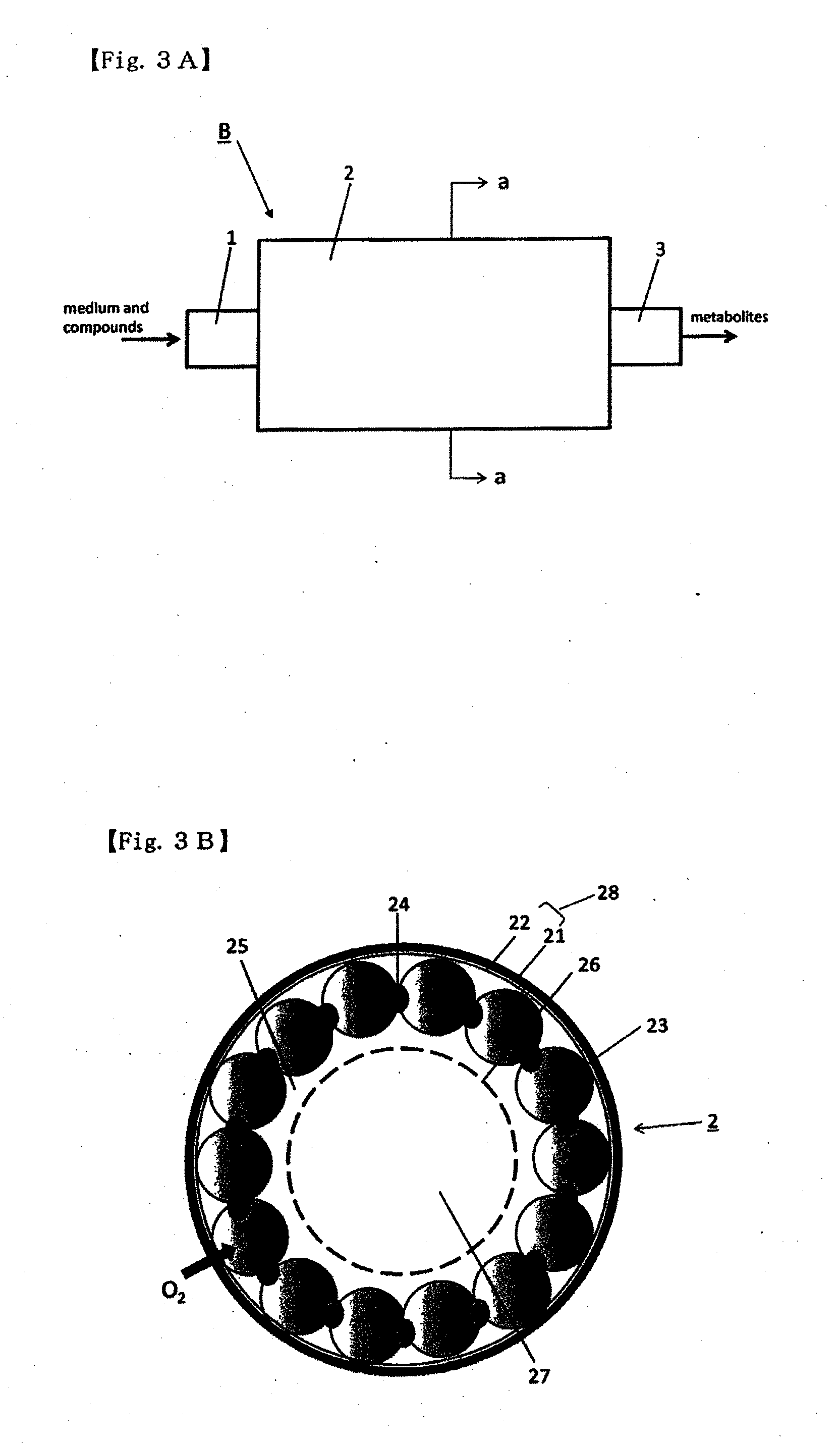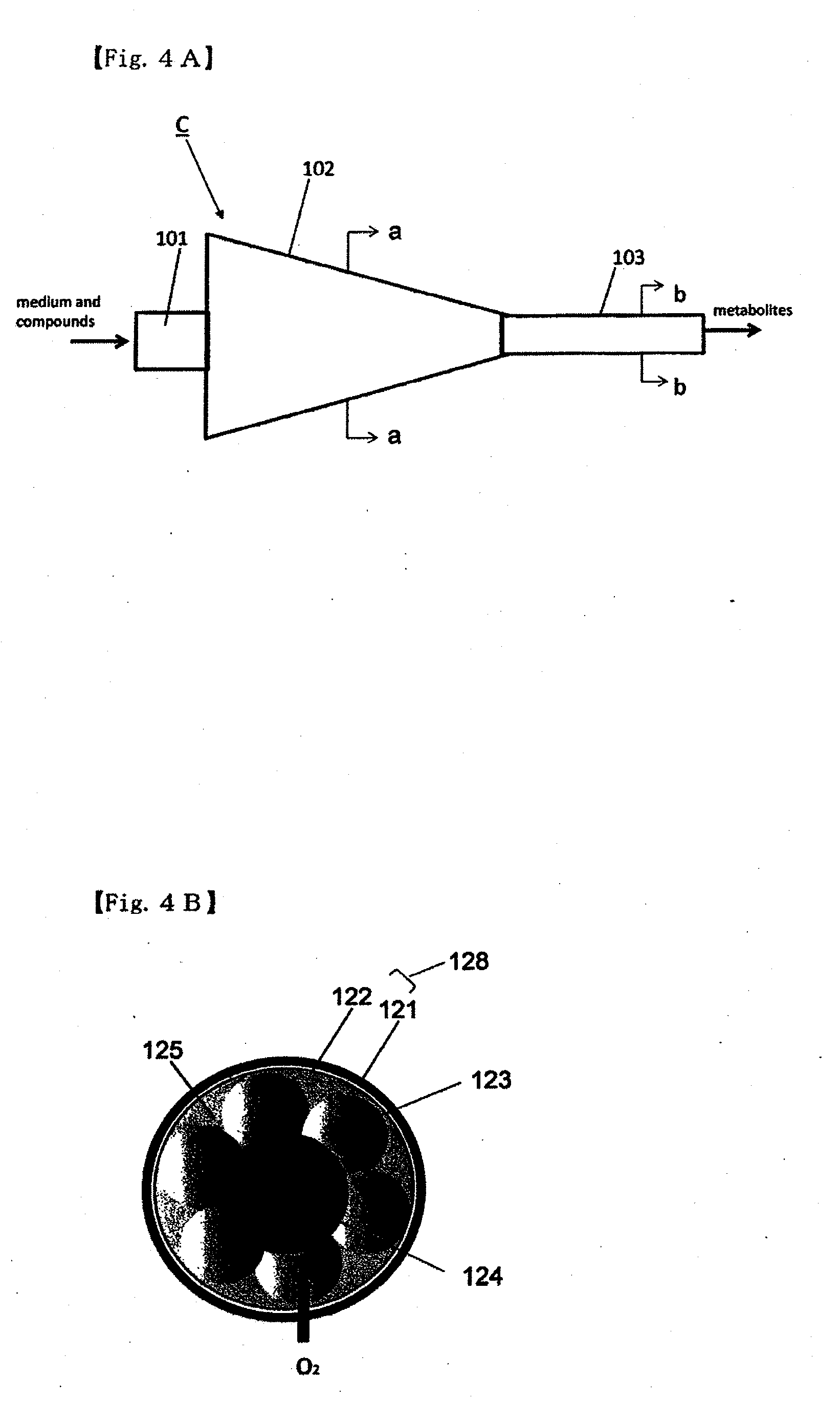Method for culture of hepatocytes
- Summary
- Abstract
- Description
- Claims
- Application Information
AI Technical Summary
Benefits of technology
Problems solved by technology
Method used
Image
Examples
example 1
Culture of Hepatocytes by Method of Present Invention and Confirmation of Formation of Bile Canaliculus
Isolation of Hepatocytes
[0133]From the liver of rats of 5 weeks old (purchased from Sankyo Labo Service Corporation), cells derived from the liver were separated according to a Non-patent Document (Seglen P O, 1976, in Methods in cell biology (Prescott D M ed) 13th ed, pp 29-83, Academic press, New York).
Preparation of 24-well Culturing Device Having PDMS Membrane to Which Collagen is Covalently Bound
[0134]The method was carried out according to the method described in a Non-patent Document (M. Nishikawa et al. Biotechnology and Bioengineering, 2008, vol. 99, pp. 1472-1481). The base compound and the curing agent of Silpot 184 (manufactured by Dow Corning Toray Co., Ltd.) were mixed together at a ratio of 10:2 to prepare a mixture, and 30 g of this mixture was thinly spread on a plastic container having a size of 258 mm×174 mm×45 mm, followed by curing the mixture at 80° C. for 2 h...
example 2
Study of Method of Pretreatment of PDMS Membrane
[0140]A comparison was made between the culturing device having a PDMS membrane to which collagen is covalently bound, which was prepared in Example 1, and a culturing device having a PDMS membrane to which collagen was bound by adsorption, in terms of the efficiency to form bile canaliculi.
Preparation of PDMS Membrane 24-well Culturing Device
[0141]A 24-well culturing device having a PDMS membrane to which collagen is covalently bound was prepared in the same manner as in Example 1. A 24-well culturing device having a PDMS membrane to which collagen was bound by adsorption was prepared by adding a small quantity of a 1.7 mg / mL collagen solution (manufactured by Becton, Dickinson and Company) to each well of the PDMS membrane 24-well culturing device subjected to the aminosilane treatment step and then to the oxygen plasma treatment in Example 1, to cover the well, and leaving the resultant to stand for 18 hours at room temperature, fol...
example 3
Study of Extracellular Matrix Component to be Deposited
[0144]In the culturing device having a PDMS membrane to which collagen is covalently bound, which was prepared in Example 1, the efficiency of formation of bile canaliculi was compared among extracellular matrices to be deposited.
[0145]This study was carried out in the same manner as in Example 1 except for the extracellular matrix component to be deposited. On the culturing device prepared as described above, 2×105 cells / well of hepatic parenchymal cells were seeded, and the culture medium was replaced 4 hours later. Twenty four hours after the plating, 20 μL of a 1.7 mg / ml collagen solution (manufactured by Becton, Dickinson and Company) was deposited on the cells, and gelation was allowed to proceed at 37° C. for 1 hour, to provide a collagen gel sandwich group. On the other hand, 24 hours after the plating, Matrigel (manufactured by Becton, Dickinson and Company) 50-fold diluted (corresponds to a concentration of 150 μg / mL) ...
PUM
 Login to View More
Login to View More Abstract
Description
Claims
Application Information
 Login to View More
Login to View More - R&D
- Intellectual Property
- Life Sciences
- Materials
- Tech Scout
- Unparalleled Data Quality
- Higher Quality Content
- 60% Fewer Hallucinations
Browse by: Latest US Patents, China's latest patents, Technical Efficacy Thesaurus, Application Domain, Technology Topic, Popular Technical Reports.
© 2025 PatSnap. All rights reserved.Legal|Privacy policy|Modern Slavery Act Transparency Statement|Sitemap|About US| Contact US: help@patsnap.com



